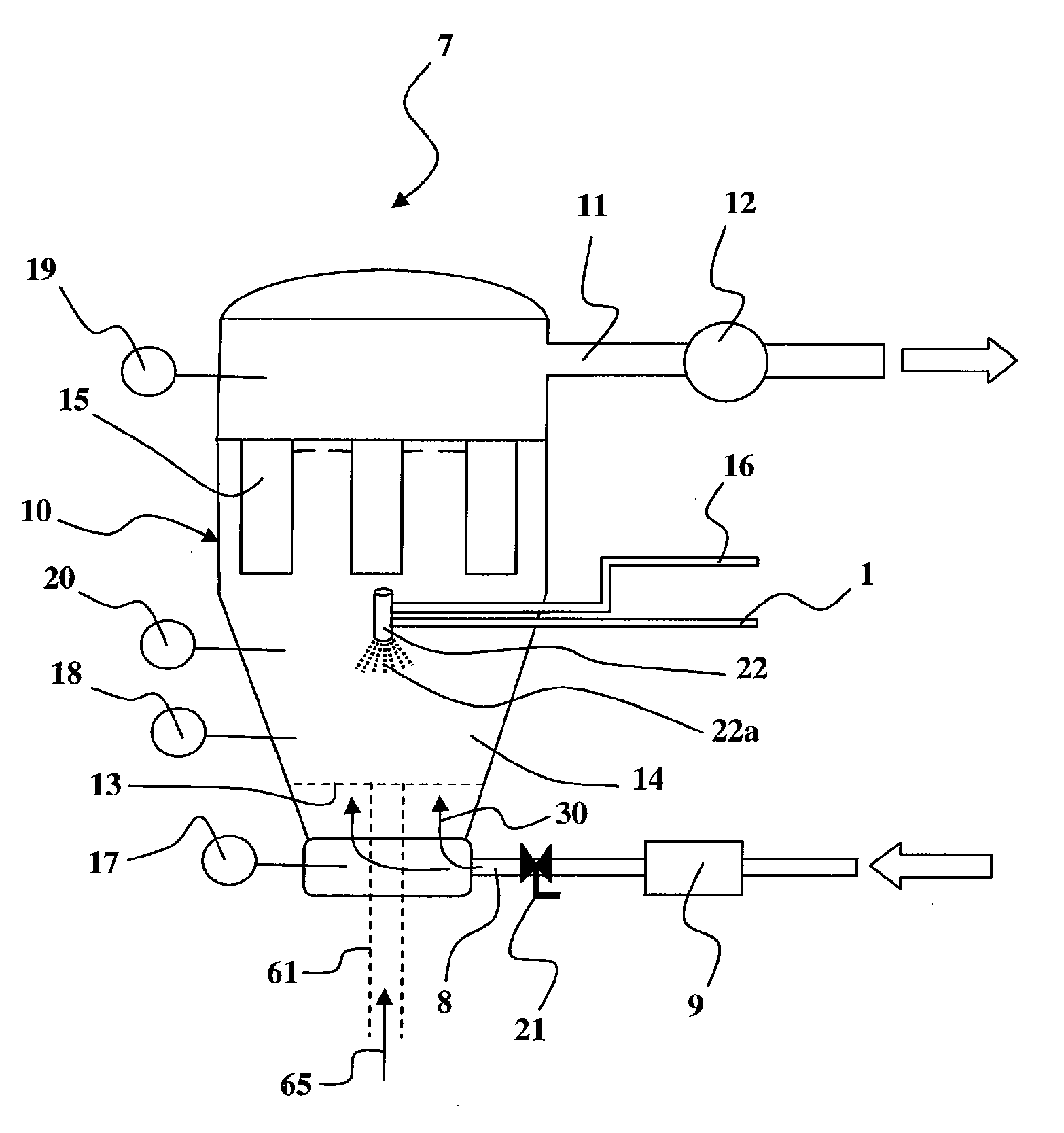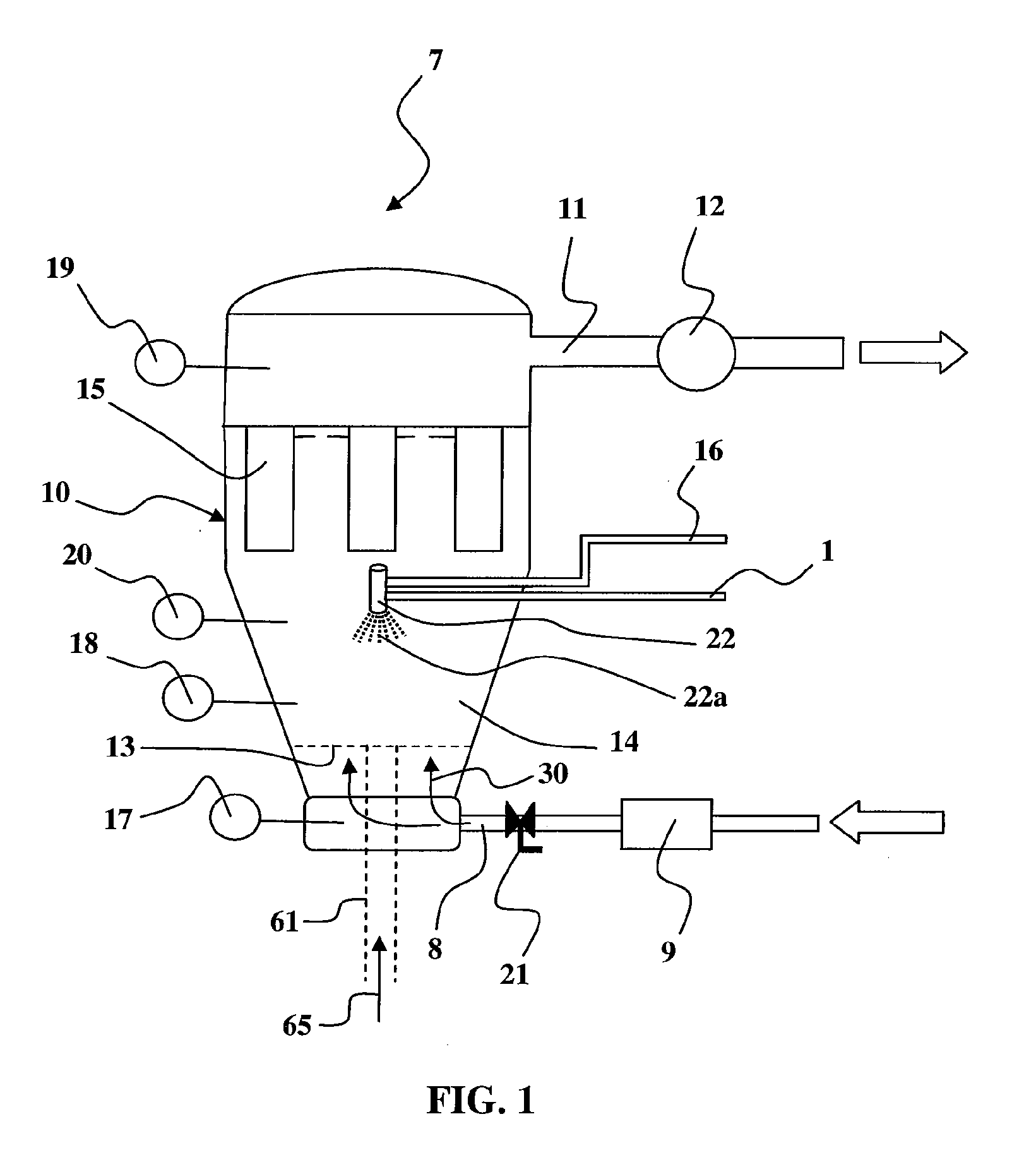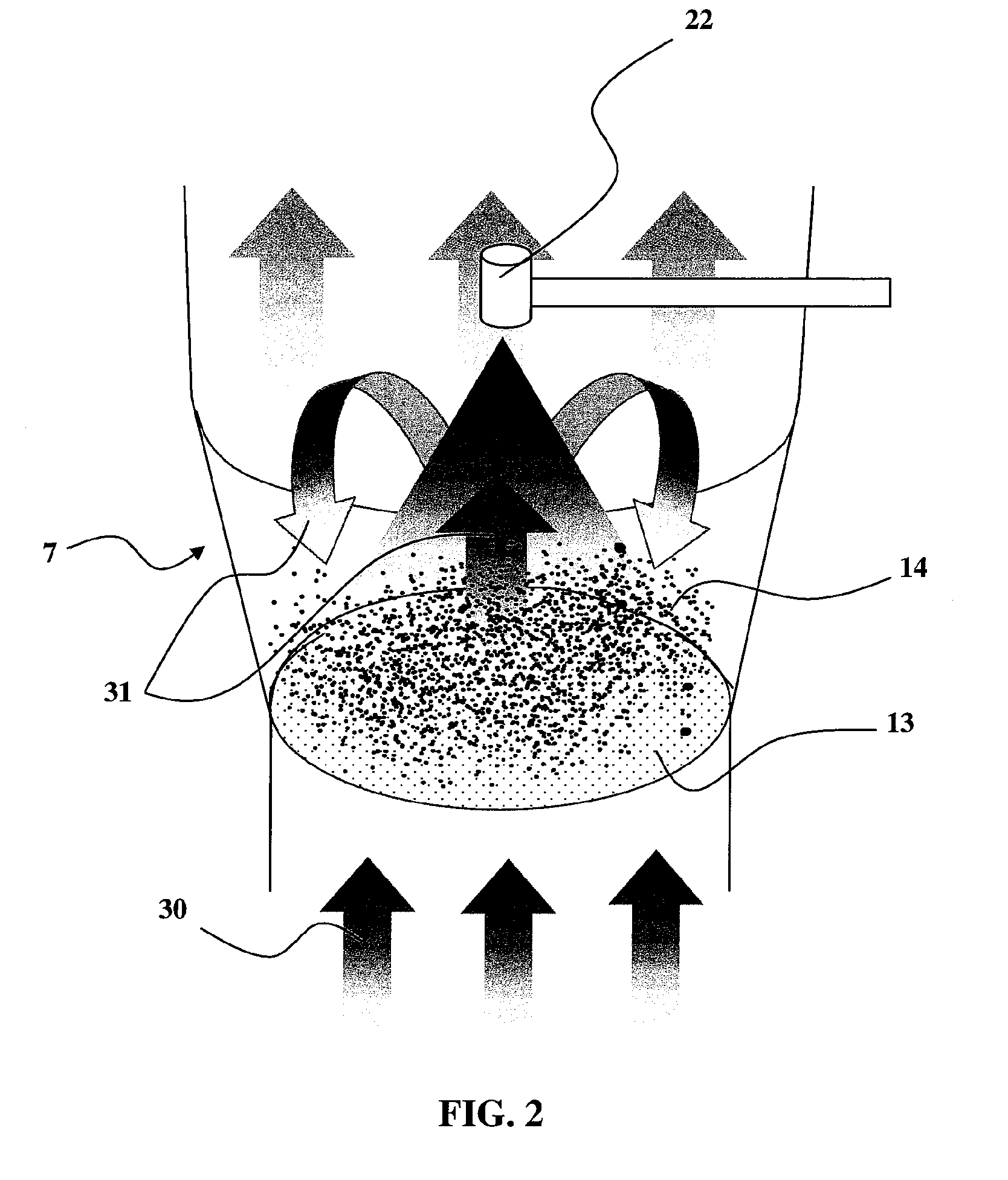Process and device for manufacturing organometallic complexes in powder form
a technology of organometallic complexes and powder form, which is applied in the direction of group 1/11 element organic compounds, lighting and heating apparatus, furnace types, etc., can solve the problems of complexes in powder form being liable to rapidly take up moisture, liable to lose water, and complexes being simultaneously fully dispersible and no longer water-soluble. , to achieve the effect of great stability
- Summary
- Abstract
- Description
- Claims
- Application Information
AI Technical Summary
Benefits of technology
Problems solved by technology
Method used
Image
Examples
example 1
Iron Glycinate Via a Continuous Process
[0099]The synthesis of iron glycinate may be performed as follows.
[0100]A weight mixture of 30.5% water, 56.50% iron II sulfate heptahydrate and 13% glycine is prepared.
[0101]The water is heated to 60° C., and the iron II sulfate heptahydrate and the glycine are then introduced into the water in a mixer.
[0102]The mixture is stirred and heated until it reaches a temperature of 70° C., for at least 15 minutes.
[0103]This solution is then sprayed (by granulation) in a fluidized bed with a bottom-spray system in a Glatt Procell 5 machine (Glatt GmbH, Weimar, Germany).
[0104]The flow rate of suspending air in the Glatt Procell 5 machine is set at 150 m3 / hour. The product temperature is 59° C. The spraying-air pressure is 2.5 bar. The spraying rate is 20 g / minute. The nozzle diameter is 1.2 mm. The air inlet temperature is 95° C. The air outlet temperature is 50° C.
[0105]The product having a satisfactory grain size is collected continuously. Measuremen...
example 2
Copper Glycinates
[0108]The synthesis of copper glycinates may be performed as follows.
[0109]A weight mixture of 37.69% water, 48.02% copper sulfate pentahydrate and 14.29% glycine is prepared.
[0110]The water is heated to 55° C., and the copper II sulfate pentahydrate and the glycine are then introduced into the water in a mixer.
[0111]The mixture is stirred and heated until it reaches a temperature of 70° C., for at least 15 minutes.
[0112]This solution is then sprayed (by granulation) in a fluidized bed with a bottom-spray system in a Glatt Procell 5 machine (Glatt GmbH, Weimar, Germany).
[0113]The flow rate of suspending air in the Glatt Procell 5 machine is set at 100 m3 / hour. The product temperature is 65° C. The spraying-air pressure is 2.5 bar. The spraying rate is 23 g / minute. The nozzle diameter is 1.2 mm. The air inlet temperature is 110° C. The air outlet temperature is 50° C.
[0114]The product having a satisfactory grain size is collected continuously. Measurement of the mois...
example 3
Zinc Glycinates
[0118]The synthesis of zinc glycinates may be performed as follows.
[0119]A weight mixture of 57.7% water, 29.9% zinc sulfate monohydrate and 12.5% glycine is prepared.
[0120]The water is heated to 55° C., and the zinc sulfate monohydrate and the glycine are then introduced into the water in a mixer.
[0121]The mixture is stirred and heated until it reaches a temperature of 70° C., for at least 15 minutes.
[0122]This solution is then sprayed (granulation) in a fluidized air bed with a bottom-spray system in a Glatt Procell 5 machine (Glatt GmbH, Weimar, Germany).
[0123]The flow rate of suspending air in the Glatt Procell 5 machine is set at 150 m3 / hour. The product temperature is 59° C. The spraying-air pressure is 2.5 bar. The spraying rate is 23 g / minute. The nozzle diameter is 1.2 mm. The air inlet temperature is 95° C. The air outlet temperature is 50° C.
[0124]The product having a satisfactory grain size is collected continuously. Measurement of the moisture content may...
PUM
| Property | Measurement | Unit |
|---|---|---|
| size | aaaaa | aaaaa |
| size | aaaaa | aaaaa |
| temperature | aaaaa | aaaaa |
Abstract
Description
Claims
Application Information
 Login to View More
Login to View More - R&D
- Intellectual Property
- Life Sciences
- Materials
- Tech Scout
- Unparalleled Data Quality
- Higher Quality Content
- 60% Fewer Hallucinations
Browse by: Latest US Patents, China's latest patents, Technical Efficacy Thesaurus, Application Domain, Technology Topic, Popular Technical Reports.
© 2025 PatSnap. All rights reserved.Legal|Privacy policy|Modern Slavery Act Transparency Statement|Sitemap|About US| Contact US: help@patsnap.com



